




|
Most children will have a full set of twenty primary teeth sometime beween their second and third year. These teeth are just as important as the permanent teeth and need the same amount of care and attention to maintain their health. Aside from their importance in chewing, speaking, and appearance, they serve the important function of holding the space needed for the eruption of the permanent teeth. Parents should begin brushing the child's teeth as soon as they erupt. Young children should be encouraged to also brush their own teeth but their motor skills and attention to detail are such that they will need assistance until about age five to do a thorough job. The first dental visit usually takes place about the time that all of the primary teeth have erupted--between ages two and three. The parents can help prepare the child for a pleasant first visit by talking positively and discussing the visit in a positive manner. To avoid "baby bottle tooth decay," (fig. 1 and fig. 2) don't allow the infant to nurse continuously from a bottle of milk, formula, sugar water, or fruit juice during naps or at night. Rampant decay can occur when these liquids are allowed to pool around the child's teeth for extended periods of time during sleep. |
 fig.1 nursing bottle decay has caused the destruction of the front teeth | 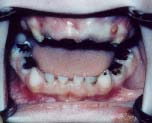 fig.2 another view of the same patient showing decay of the back teeth |
| Thumbsucking, finger habits, and the extensive use of pacifiers can create problems with normal dental development. They can cause an open bite or displacement of the teeth (fig. 3). Parents have direct control on the use of pacifiers and I would discourage their use. Sucking is one of a baby's natural reflexes and will normally stop. If the habit continues past age two the child should be encouraged to stop with gentle persuasion. |
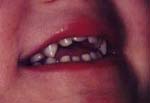 fig.3 a thumb sucking habit has caused a large space (an open bite) when this young girl has her teeth biting together |
|
The first permanent tooth to erupt is usually the first permanent molar. This tooth doesn't replace any primary tooth and errupts behind the last primary tooth. This tooth can last a lifetime without decay if properly cared for. Also at about this same time a lower front primary tooth will be the first baby tooth to be lost. It is important to observe the eruption of these permanent teeth. Occasionally they will erupt out of position if the primary tooth is retained. To prevent the malpositioning of the permanent tooth it might be necessary to remove the retained primary tooth. Regular dental visits are necessary to maintain good oral health. The diagnosis and treatment of dental problems, when detected early, can be treated more effectively. A check up visit will include an examination to detect decay and problems developing with the teeth and gums and other structures of the mouth. All the soft tissues will be examined for abnormalities. The growth of the jaws and the eruption and shedding of teeth will be monitored. An assessment of the patient's home care will be made and brushing and flossing instructions will be given. The teeth will be evaluated as to the need for sealants. To detect developing abnormalities and to check for decay, x-rays might be recommended (figs. 4,5,6,7). The teeth will be cleaned and fluoride applied. Fluoride is one of the most effective elements in preventing tooth decay. Fluoride combines with tooth enamel to strengthen it against decay. |
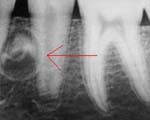 fig.4 early detection and treatment of this extra tooth will help prevent serious problems |  fig.5 another example of an extra tooth |
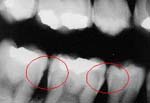 fig.6 circled areas indicate decay between teeth, at this stage detectable only by x-rays | 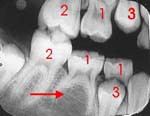 fig.7--1. primary tooth 2. permanent tooth 3. erupting permanent tooth the arrow points to a missing permanent tooth; early detection allows planning for future treatment |
| Bonding | Veneers | Crowns | Bleaching | Recontouring | Periodontal Disease | Fluoride | Sealants | Prevention | Tooth Topics | History | Children | Endodontics | Materials | TMD | FAQ | Prosthodontics | Implants |
Take me back Home
